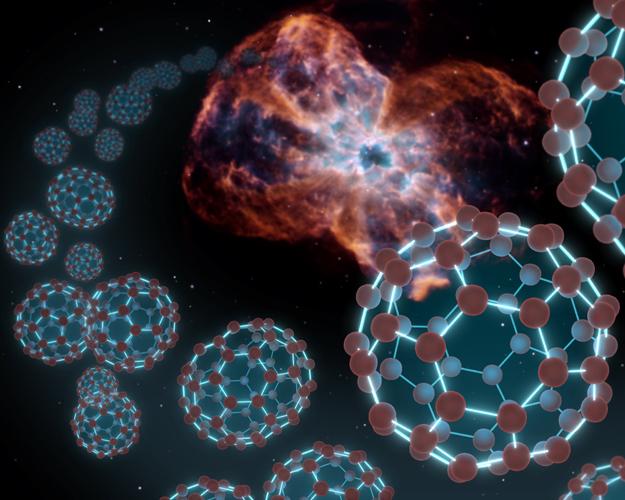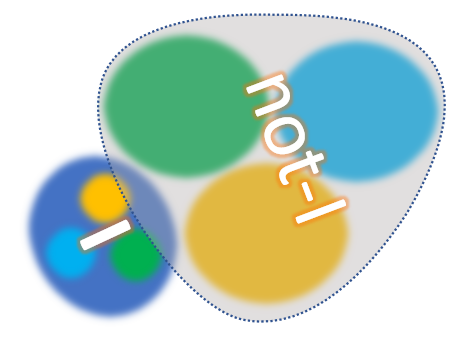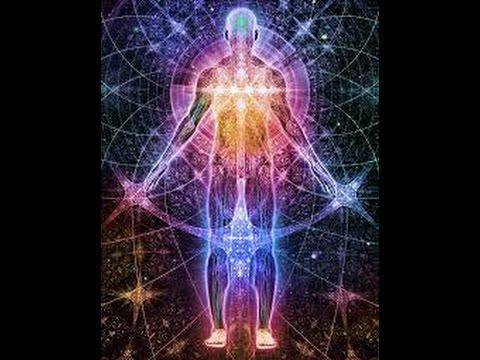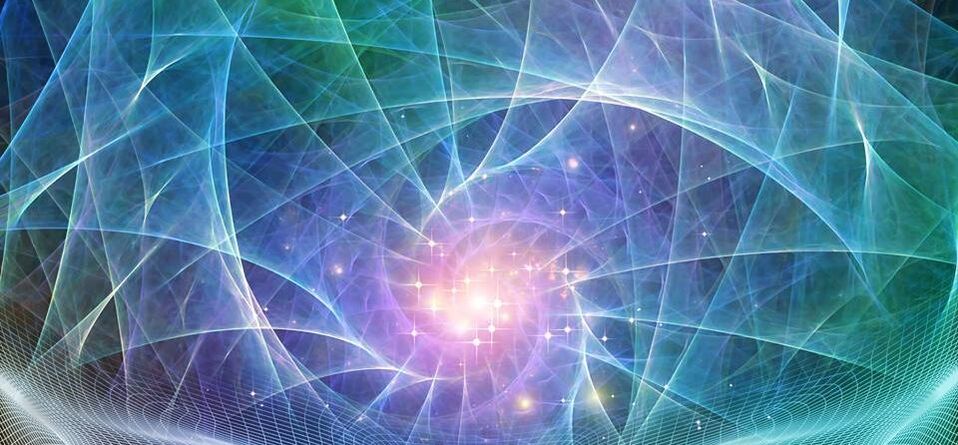A New View on Fine-Tuning of the Universe (With Some Practical Implications for Our Lives)30/8/2017
There’s no law of physics that hasn’t been transcended. In the end, the only law is that there is no law. - John Wheeler, theoretical physicist
Modern science has reached the point where it is inquiring the very foundations of the universe. Was it created by a conscious creator? Or did it simply pop out from nothingness, by a mere chance?
There are countless debates now whether the physical laws of the universe are finely tuned to support biological life or not. There is a good reason for that: they indeed seem to be tweaked for life. Universal Constants As you probably know, many laws of physics are deeply dependent on various constant numbers that are parts of equations describing these laws. Those numbers are called the universal constants – the speed of light (c), gravitational constant (G), electric constant (ε0), Planck's constant (ħ), the mass of an electron (me), two parameters of the Higgs field potential, etc. Moreover, there are also even more fundamental constants that are dimensionless (i.e. not dependent on the unit system used to express the quantity). Those are, for example, the fine-structure constant (α), which defines the strength of the electromagnetic interaction between elementary charged particles, or proton-to-electron mass ratio, or the cosmological constant, which is the density of dark energy in the universe, and so on. There is a strong notion among scientists, backed by many extrapolations, that if any of these universal constants were only slightly different, the Universe wouldn’t be supportive of any kind of biological life. For example, if the gravitational constant were smaller, the stars couldn’t be formed. If it were too large, the stars couldn’t survive or their life span would be much shorter, so in either case, life wouldn’t be possible. Similar conclusions can be deduced for all other universal constants. If any of these universal constants were only slightly different, the Universe wouldn’t be supportive of any kind of biological life.
One of the solutions could be that we live in a multiverse, consisting of a huge or even infinite number of universes, each having different internal laws of physics.
Hence, the possibility of the emergence of a universe out of nothing, which is suitable for biological life and/or development of conscious beings, is practically equal to zero. There must be a conscious creator of this world.
Or is it so? One of the solutions could be that we live in a multiverse, consisting of a huge or even infinite number of universes, each having different internal laws of physics. Could it be that our universe must be suited to us, because it is an indivisible part of us, and vice versa?
The idea is that there are no rules regarding the newly formed universes. Everything imaginable exists somewhere. Even the unimaginable exists. Although there is a very narrow range of combinations of physical laws that are supportive of life, still there would be an infinite number of such universes, and we can be situated only in that kind of a universe. So that’s why our world is as it is. This is, more or less, the idea of so-called anthropic principle.
Yet, is there a different solution to this philosophical question? Could it be that our universe must be suited to us, because it is an indivisible part of us, and vice versa? Evolution of Consciousness from the Very Beginning Here is an alternative view on the origin of existence and consciousness itself. It is based on some ancient mystical teachings, such as Gnosticism, on some modern-day philosophical approaches, as well as on pure logic, where applicable. In the beginning, there was only Oneness (God, Emptiness, Nothingness, Source, True Reality…). As a mere whim of Oneness, a primordial polarity has emerged out of it: “I” and “not-I.”[1] [1] Why did that happen? From the point of view of our limited minds, the primordial Oneness could only exist in some sort of eternal space and time continuum, as we cannot otherwise comprehend any existence. That being said, mathematics of infinite numbers says that if anything exists within infinite space and infinite time span, there is a 100% chance for any change, disturbance or imperfection to occur. That disturbance was the primordial polarity which occurred as the beginning of this whole world. In accordance with that logic, there is a 100% chance to have an infinite number of varieties of imperfections or disturbances in that Oneness, and, subsequently, we might say that there are infinite worlds with infinite varieties of laws out there. However, as we cannot comprehend the primordial Oneness with our limited minds, we can only say that the emergence of the primordial polarity was a whim of God.
These two primordial entities were only conscious of the opposite entity. “I” was conscious of the existence of “not-I,” while “not-I” (that was experiencing itself as “I”) was conscious of the other polarity.
As Oneness is inherently indivisible and cannot really split itself into something, these apparent entities were, in fact, the Oneness itself. Consequently, each had complete information on its opposite, as it was inherently whole and one with it and with Oneness. The primordial “I” was a simple entity, without any measures or qualities. It could be compared only to the “not-I.” Correspondingly, the “not-I” was also simple and without any inherent qualities. It had also a simple consciousness of the existence of the first entity (“the I”), which was, in fact, the “not-I” to that (“second”) entity.
Then, these two polarities divided themselves again.[1] Each of these new entities was a new “I,” and the three others were the “not-I” to that entity. The composition of that “not-I” was, in fact, a primordial structure of the external world to “I,” with its simple “laws” of the world.
[1] As this is obviously the universe of polarities, which is visible on all levels of existence, the first apparent existence was the primordial polarity. It seems that Oneness in this universe tends to “divide” into pairs (rather than triads, for example), so it is the nature of all subsequent entities. All entities tend to either divide themselves into pairs or merge into a one entity. Although “I” and “not-I” seem to be entirely dissimilar in their size and complexity, they are always perfect complements to each other.
Once again, as it is impossible to divide the Oneness, all its apparent “entities” or offspring are still the Oneness itself, the Oneness that is, say, “shrunk down” to a seemingly limited size. Yet, each of them is the Oneness itself, and that’s the holographic principle in action. That’s why every “I” has a complete information on the corresponding “not-I” or the rest of its world, and the other way around.
These entities are continuing to divide themselves an enormous number of times. The evolution continues. To each “new I” there is a corresponding “not-I,” which becomes ever more complex as the process of division continues. That “not-I” always consists of all the other “Is” out there, including their mutual relationships. Although “I” and “not-I” seem to be entirely dissimilar in their size and complexity, they are always perfect complements to each other. Every “I” is unique and has a different constellation of other “Is,” i.e. it has a different individual reality. Furthermore, as the division of entities continues, every “new I” apparently becomes more and more complex, as it internally encompasses all information on its outer world, which is the complementary entity to it. Moreover, this whole structure is based on its fractal nature.[1] [1] Fractals are infinitely complex patterns that are self-similar across different scales. As our reality is merely our counterpart, it must be “finely tuned” to us by its very nature, in a sense of complementarity; otherwise, we wouldn’t exist as “I,” neither the Universe would exist as the “not-I.”
Every “I” is conscious of its outer world, and vice versa. The outer world, or “not-I,” as an entity, is conscious of its counterpart that we call “I.”
The real shift occurs when “I” begins to become conscious of itself. Although that process is slow, as “I” is an internally very complex entity (as its “not-I” is), it means that the two opposites have begun to reunite, reintegrate or merge. This is the point of our whole spiritual evolution. As we are becoming conscious of ourselves, we are expanding our consciousness inward and outward simultaneously, as our “not-I” is also becoming conscious more and more of itself and ourselves. Eventually, they merge and we are Oneness again. This is a very, very simplified overview of the evolution of consciousness. Is the Universe Our Precursor? What does this mean regarding the laws of physics, that are apparently so finely tuned to support biological life? Our Universe is not our precursor. Here’s why. The outer reality is the “not-I” to each of us. As our reality is merely our counterpart, it must be “finely tuned” to us by its very nature, in a sense of complementarity; otherwise, we wouldn’t exist as “I,” neither the Universe would exist as the “not-I.” We are indivisible. The universe around us is aware of our existence. It can consciously influence our inner being, in a similar way that we can influence our outer world.
Individual and Group Realities
There are many different conscious beings (or conscious points of view), either within this Universe or in other universes. Each of them has a unique perspective and a unique universe “around it.” We, human beings, are merely an agglomerate of very “similar Is,” that are elements of a much bigger organism, the humanity itself. As we are so similar to each other and share same or similar points of view, internal information and complexity, we seem to experience this concrete Universe. In fact, we are living in many different individual universes, which appear same or similar to the majority of us, so we think there is a one, common reality to all of us. What is the “not-I” in our individual reality? It’s everything that we feel to exist outside of us. It seems that it is the whole universe that we are perceiving around us. However, our individual world is not as big as we might think. It consists of our immediate surroundings, including people and other living beings within it. Everything beyond that is part of multi-layered collective reality. In accordance with the above-stated metaphysical ideas, our individual “not-I” is conscious of its counterpart, i.e. our “I.” What does that mean? The universe around us is aware of our existence. Not only that, it can consciously influence our inner being, in a similar way that we can influence our outer world. We could even say that our external reality is our individual “God.” It can deeply influence our lives and it is a perfect match to our inner beings. Our “not-I” is always mirroring the inner aspects of our being – our beliefs, values, traits, emotions, fears, desires, decisions, thoughts, etc. Whatever is our attitude toward the outer world, it will relate to us correspondingly.
As there exist countless individual polarities “I”/“not-I,” there are also innumerable group pairs of “Is” and “not-Is.” They are conscious beings. These invisible, collective entities manifest their existence in many circumstances. Families, tribes, nations, religious groups, biological species…they all have their own collective “Is,” along with fitting “not-Is.” That way every collective entity, for example, a religion branch, has its own, unique “not-I,” which behaves as their “God.” It is completely suited to the beliefs, fears, desires and other conscious and unconscious structures characteristic of that group. Their unique “God” can even create miracles, fully matched to their beliefs and expectations, so the group can believe that they only are on the right path.
Every collective entity, for example, a religion branch, has its own, unique “not-I,” which behaves as their “God.”
Also, thanks to the existence of these collective conscious beings, every biological species has managed to evolve in many ingenious ways to adapt itself to its reality.
Changed Paradigms or Changed Realities? It is important to understand that our apparent “common reality” has not always been as it is now. Its very nature has been changed many times. Human mystics, philosophers, and scientists have been changing the whole paradigms of this world every so often. From our point of view, those past paradigms (mystical magic world, or central role of the Earth, or classical physics view, etc.) were not true. But can we be so sure of that? People do create their individual and group realities, and we cannot be certain whether the paradigms of the past were objectively true or not. Usually, we think of the universe as this rigid thing that can’t be changed. Instead, methodologically we should assume just the opposite: that the universe is before us so that we can shape it, that it can be changed, and that it will push back on us. - Christopher Fuchs, quantum theorist
Other beings, apparently very different from us, could be living on other planets in this universe, or even in entirely different universes, which are “finely tuned” to suit their existence, as they are, once again, their exact opposites, the “not-Is.” They must be suited to them. We could even say that this is the Anthropic principle on steroids.
Christopher Fuchs, quantum theorist, has nicely expressed similar ideas: “There’s no ultimate law of physics. All the laws of physics are mutable and that mutability itself is a principle of physics. (...) Usually, we think of the universe as this rigid thing that can’t be changed. Instead, methodologically we should assume just the opposite: that the universe is before us so that we can shape it, that it can be changed, and that it will push back on us. (...) Quantum mechanics is not about how the world is without us; instead, it’s precisely about us in the world.
The Practical Implications
One could say, “OK, if even this were true, what would be the practical value of these ideas?” The main idea here is that our beings are in fact polarities consisting of “I” and “not-I,” self and no-self. Every “I” has its exact complement, “not-I.” Microcosm – the “I,” is the complementary counterpart of its Macrocosm – the “not-I.” They are not the same, they are rather suited to each other perfectly. Also, each polarity within a pair is conscious of the other. The implication is very, very powerful, as every conscious being can correctly say: I am completely responsible for my life. This statement is a natural outcome of the above-mentioned complementarity. If the inner being changes, the outer world naturally follows that change. This is the holographic view in action. Every conscious being can correctly say: I am completely responsible for my life.
Furthermore, we have to respect others. Although we are inherently one, other beings live in their own universes, which may or may not be similar to ours. Everyone has their own point of view which may be completely different than ours, yet true to them. However, we don’t have to be afraid of our environment, as it is our exact mirror, although sometimes unrecognizable.
All beings in our environment – children, parents, partners, friends, opponents, colleagues – they are involved in our individual universe in the same way as we are involved in theirs. If we fundamentally change an inner part of our being (e.g. a belief or emotion) which symbolically corresponds to a friend of ours, that friend will naturally change his or her self (from their own reason) or they will somehow leave us. Another person will fill that place, which perfectly corresponds to our changed inner part. Nevertheless, if we take full responsibility for our lives, we will assume an immense power. All our inner limits will be transcended. That would really mean a life without suffering.
5 Comments
Nebo D. Lukovich
7/12/2018 20:19:17
Thank you!
Reply
Misha
22/10/2020 22:26:41
This is very profound article Nebo, not sure if I understand it completely this first time I'm reading it. Will read it again sometimes!
Reply
Nebo D. Lukovich
24/10/2020 21:54:08
Hello Misha,
Reply
Leave a Reply. |
Please note that most of the articles have a "Read More" break, which is sometimes hardly visible.
It is located at the bottom of visible part of the article, on the right side. To continue reading the article, click on that link. This page may contain affiliate links meaning we earn a commission if you use those links.
We only recommend pages we appreciate and trust. Archives
March 2023
Categories
All

|
For guest posts or placing ads on our website, please use the contact form on the 'About/Contact Us' page.








 RSS Feed
RSS Feed

